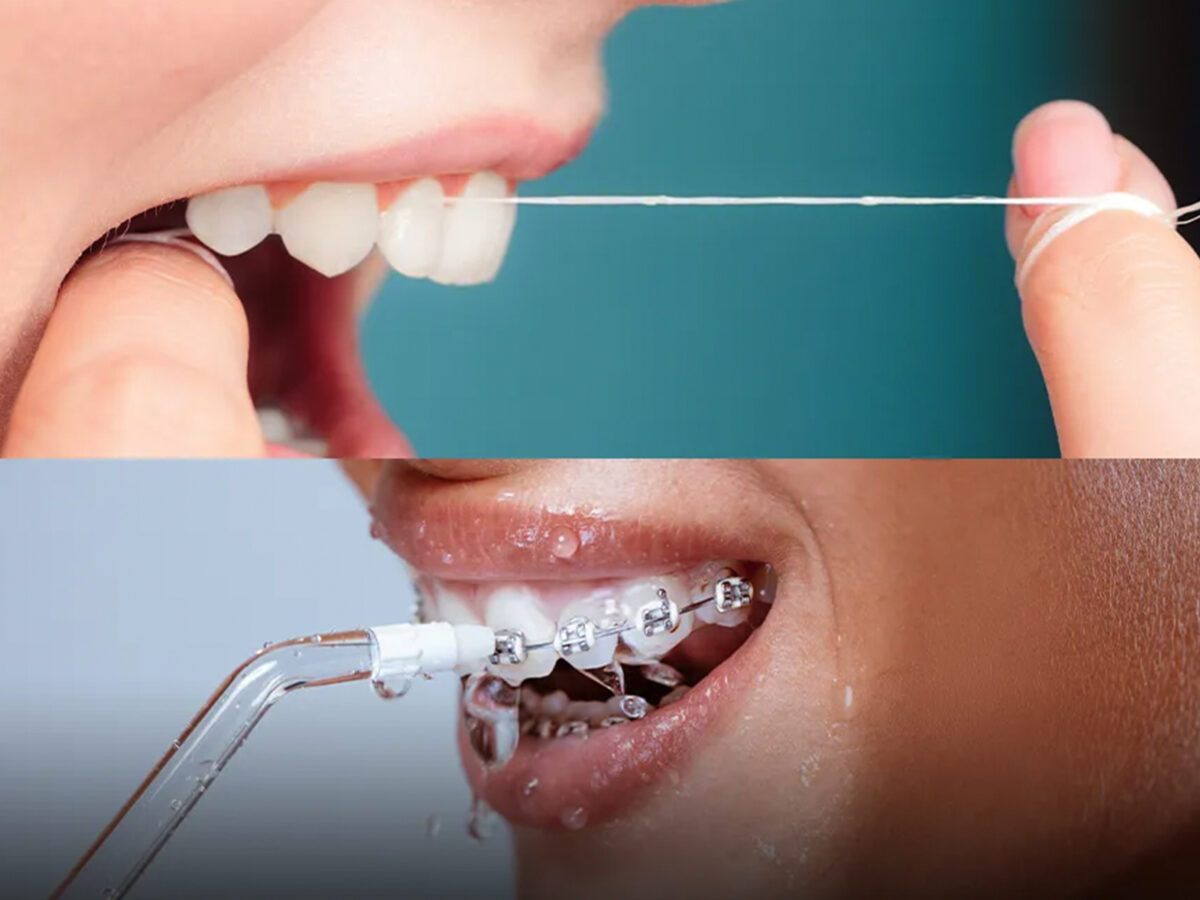Blog
Dental hygiene tips for healthy teeth & gums

Water Flossing Vs. Traditional Flossing: Which Is Better?
A healthy white set of clean teeth is gorgeous to look at. It makes a person’s smile more pleasant and personality more attractive. Most people brush their teeth twice and floss once to maintain this perfect smile. But with changing times, technology is replacing your traditional flossing method. Water flossing uses a water irrigation system that uses the force of water to clean hard-to-reach areas and remove plaque.
Flossing is one of the most important habits to maintain good oral health. But to select the type of flossing that is best for you, you must keep reading this blog. In this, you will understand the fundamental differences and benefits of each flossing to select your choice.
Types of Flossing
Flossing is an essential part of dental hygiene to prevent gum disease and tooth decay. There are two types of flossing; one is water flossing and the other is traditional flossing.
Traditional Flossing
Plaque and food particles are removed from under the gumline and between the pearly whites by flossing. Without proper plaque removal, teeth can decay, and gum disease can develop. When flossing daily, make sure you do it correctly.
Traditional flossing is quite a simple procedure involving a few easy steps.
- Firstly, take a piece of floss that is approximately 18 inches long and tear it off.
- After that, wrap it around the middle finger of each hand. You should only have a few inches of space to floss.
- Hold the floss tightly with your fingers and thumbs.
- With the floss between each tooth, you can move it up and down.
- The floss should be curved around each tooth’s base rather than forced.
- Use your fingers to clean each tooth with a clean section of floss.
- Remove floss from between two teeth by sliding it up and down.
Water Flossing
Water flossing uses a water irrigation system to clean tough-to-reach areas in the mouth. It is a modern way to keep good oral health and helpful for people with braces. When someone has difficulty holding string floss or has a dental setup, such as braces, in which positioning floss among teeth can be difficult, water flossing can be an effective alternative.
Benefits of Traditional Flossing
Traditional flossing is easier to learn and control. Here are some benefits they offer:
- It is easier to manage.
- It is much cheaper.
- It helps in the removal of tartar formation and to dominate and navigate in the mouth as you like.
- It helps in cleaning each tooth from all sides in total.
Benefits of Water Flossing
Water flossing is a modern yet effective method of cleaning. Some benefits of water flossing are:
- It is easier to use and requires no or minimal movement.
- It can get hard to reach areas conveniently for plaque removal.
- It does not need any measurement to cut floss or to learn how to move hands to clean effectively.
- It can even clean tightly-spaced teeth.
Final Thoughts
If you can see yourself using the method daily, it is likely your best dental hygiene method. Manual flossing provides more control for many people. But some people find it amazing how fresh and deeply clean a water floss session can make them feel.
Flossing is sometimes recommended first to loosen food and debris between the teeth, which can then be brushed away. Some also believe that they brush first to get rid of the bulk of plaque, which might be blocked by food, so we can have fluoride from toothpaste reach areas not touched by food while flossing.
Flossing is a must, but your chosen method and when to floss depends on your choice. Whether it is traditional or flossing, always ensure you floss regularly. Also, visit the dentist to detect early signs of gum disease. A professional cleaning session can give you a new start to your oral health journey.
